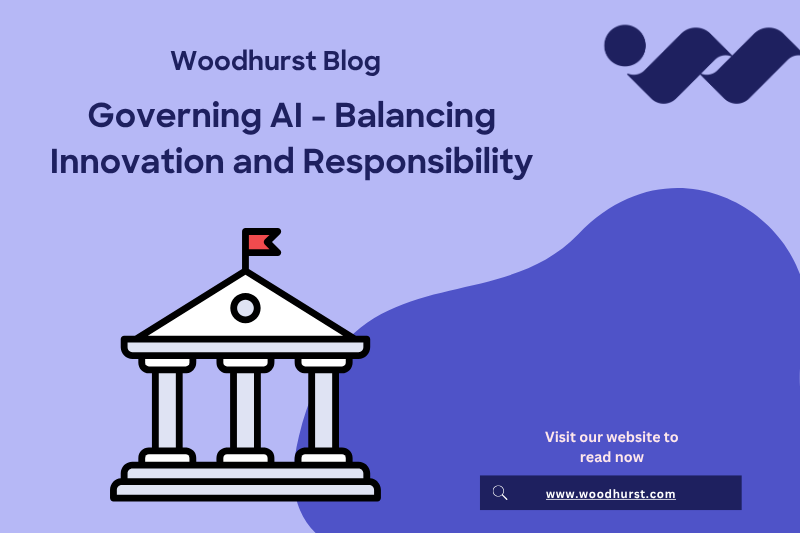In a sector driven by trust, stability, and strategic decision-making, artificial intelligence (AI) is rapidly transforming how financial services operate. As digital-first competitors successfully harness AI’s capabilities, established institutions must act decisively to remain competitive. The question is no longer whether to integrate AI, but how to do so effectively while upholding core business values and regulatory responsibilities.
This is the first entry in a multi-part series exploring how financial services can effectively adopt AI. In this article, we provide a strategic overview – framing the core principles, opportunities, and challenges that shape successful AI integration. In the following entries, we’ll dive deeper into key enablers such as data readiness, governance, workforce collaboration, and scaling AI across the enterprise.
AI isn’t a threat to traditional financial services models – it’s an enabler. When implemented within a well-structured data strategy, AI can streamline operations, enhance customer personalisation, improve risk management, and drive innovation.
Understanding AI
AI is an umbrella term for advanced computational models that can perform tasks which would typically require “human intelligence” – making decisions, recognising patterns, and learning from feedback. This encompasses areas such as machine learning, neural networks, natural language processing, and generative AI.
At its very core, AI is just very advanced mathematics. Data is given to mathematical models, the models provide outputs, and humans or another AI tells them whether they are correct, or incorrect. This makes them very good at pattern recognition but – at this stage – less so at including true reasoning, intuition, and understanding of wider – sometimes less measurable – factors. As such, AI is not a replacement for most traditional jobs, just a tool to help colleagues more effective at their roles.
This understanding can help to shed light on what processes will most benefit from its adoption.
Use cases for AI

Our experience in the industry has uncovered two main use cases where AI can assist financial institutions. First, we look for operational improvements – speeding up processes, producing higher quality outputs, and moving projects along faster. In turn, this makes the customer experience easier, more enjoyable, and more efficient. Second, we look towards the value-adding potential of employing AI – improving the understanding of your customers and providing more personalised experiences for them. For example, tailored recommendations for products, proactive support, and an improved relationship through data-optimised touchpoints.
We’ve highlighted a non-exhaustive list of use cases:
- AI Integrated into Operations: AI-equipped colleagues that can act as a reviewer to manual and repetitive tasks. AI enhanced automation that checks for errors.
- Credit Decisioning: AI can enhance loan application processes, improving speed and accuracy while reducing biases in decision-making.
- Identity and Verification: Enable at-home ID verification through facial recognition technology, serving members in the comfort of their own home.
- Behaviour Prediction: Detect vulnerability and fraud when behaviour seems out-of-the-ordinary – better serving and protecting your members.
- Personalised Customer Services: Provide optimised communications, recommendations, and marketing efforts.
Making this Work

We advise businesses beginning the journey to AI adoption to consider these three areas to help ensure success:
- Landscape Readiness
- From a people, process, and technology perspective where are you currently in our ability to leverage AI?
- What changes need to be made to our landscape maturity so that you can unlock different levels of AI implementation? Is data centralised, are our people trained, and do you have the governance in place?
- Defined Business Case
- Will AI be able to solve your specific business issues?
- Is AI the best approach to doing this? Is there a simpler solution?
- Risk Mitigation
- How aware are you of the risks that AI may carry? How can you take actions to mitigate these risks?
It’s only once all three are satisfied can an organisation really begin to work towards an AI solution confidently. Some implementations – for example, using Co-Pilot – will have different dependencies to others – such as performing data-science on customer datasets.
Navigating this

Successfully integrating AI into your data landscape requires a structured and pragmatic approach. Organisations must first establish strong foundations by exploring GenAI in controlled environments, assessing their current data landscape, and defining a clear AI strategy. From there, the focus shifts to long-term scalability, initially creating an implementation plan – deciding where needs improvement, what AI would be most beneficial, and laying out how the organisation is going to get there.
By prioritising data accessibility (having clean data in a centralised location), governance, and strategic alignment, organisations can move beyond experimentation towards meaningful AI adoption. The key is to approach AI as an enabler—driving efficiency, innovation, and value—while ensuring responsible and sustainable implementation.
Final Thoughts
AI is not about replacing human expertise – it’s about enhancing it. The organisations that embrace AI strategically will be the ones that thrive in the information era. The question is no longer if AI should be adopted, but how soon you can you adopt it.
The next article in this series looks at where every successful AI initiative starts: the data. AI is only as good as the information it’s built on, which means it’s critical to ensure your data is high quality, well-governed, and easily accessible.
We’ll explore what it means for data to be “ready” for AI, some of the common maturity challenges financial services organisations face, and how to establish the governance and literacy needed to support responsible, scalable AI adoption. Solid data foundations aren’t just helpful – they’re essential to managing AI risk and meeting regulatory expectations.
Doing this alone can be intimidating. At Woodhurst, we have paired our financial services expertise with our strong data and analytics capability to help guide organisations on their AI journey. If you’d like to discuss how we can help you leverage AI further, reach out to our data specialists:
Author: Lewis Farrell






